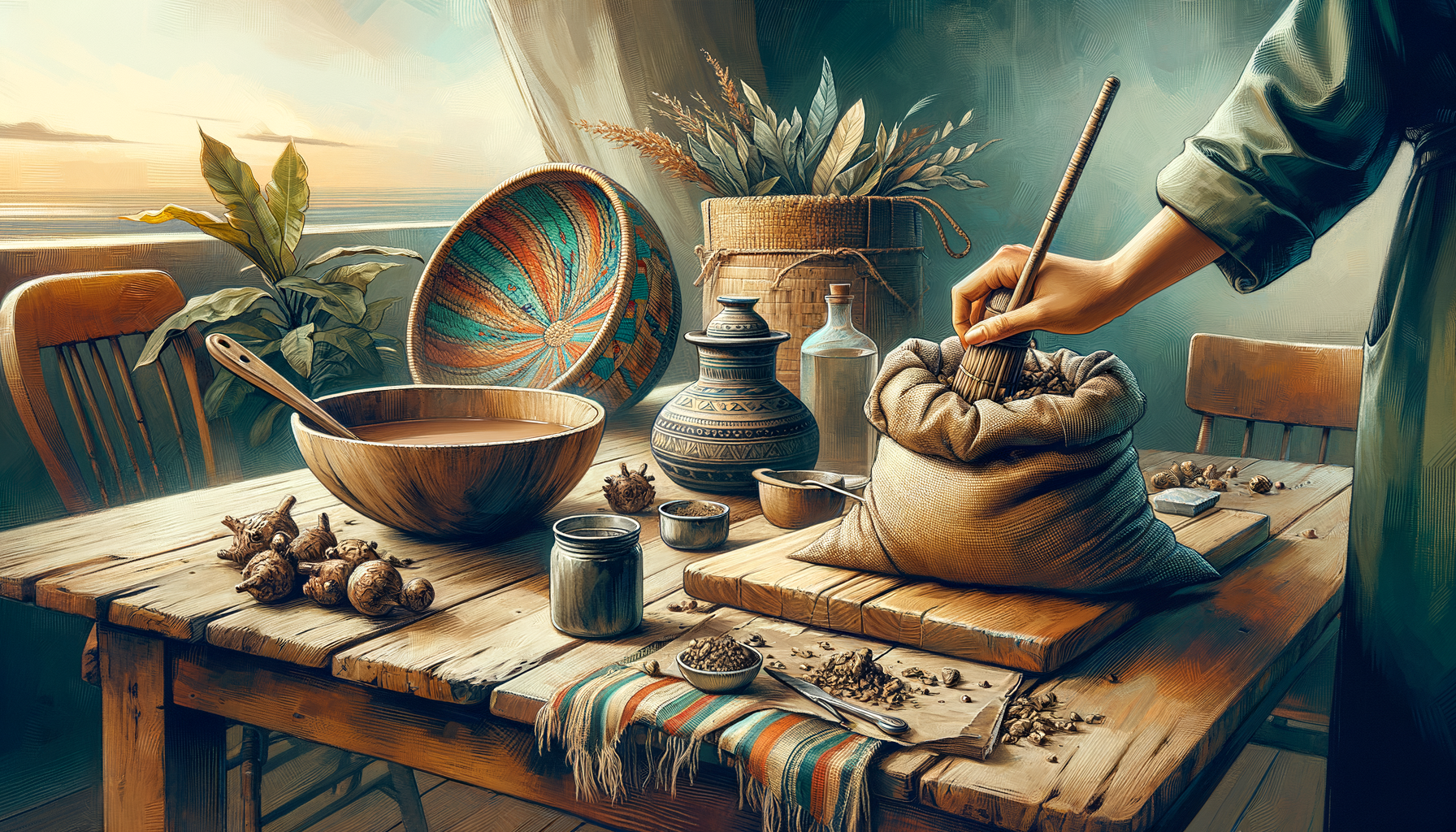Introduction
Welcome to KavaKist! We want everyone to know about kava and love it as much as we do. Whether you’re new to kava or a big fan, we’re here to help make your kava time fun and interesting. I’m Matt Warren, one of the creators of Psychedelic Water, and I remember my first time trying kava tea. The room filled with a natural, earthy smell, and after one sip, I was hooked. But I quickly found out that making kava tea the right way makes it taste even better.
Making kava tea properly is super important if you want to enjoy it the most. Let’s go through everything you need to make your kava tea taste amazing.
What You Need to Get Started
Kava Root
The main ingredient! The quality of your kava root is super important. Look for good kinds like Borogu, Loa Waka, or Vanuatu blends. You can buy these from good sellers online or in specialty stores. Make sure the root looks fresh and smells earthy.
Strainer Bag or Muslin Cloth
You need this to separate the kava root fibers from the drink. It helps make the tea smooth. Pick a fine mesh strainer for the best results.
Mixing Bowl
Your bowl should be big enough to mix the kava well but not too big. Stainless steel or BPA-free plastic bowls are great.
Water
Using good water is important. Use filtered water that is warm but not boiling, around 95-105°F, for the best results.
Step-by-Step Kava Tea Preparation Guide
Step 1: Measure Out Your Kava Root
Measure about 1-2 tablespoons of kava root for each serving. You can adjust it to make it stronger or weaker.
Step 2: Add Kava Root to the Strainer Bag
Put the measured kava root into the strainer bag or muslin cloth.
Step 3: Submerge the Bag in the Mixing Bowl with Water
Place the strainer bag in the bowl and add warm water. Use about 1 cup of water per serving of kava root.
Step 4: Knead and Squeeze the Bag in the Water for 10-15 Minutes
This step is very important! Knead, squeeze, and massage the bag to release the kavalactones into the water.
Step 5: Remove the Bag and Enjoy Your Kava Tea
Once you’ve kneaded the kava well, take the bag out and squeeze it to get the last drops. Pour your kava tea into a cup, and it’s ready to drink!
Pro Tips for the Perfect Kava Tea
Use Warm Water
Warm water helps get the good stuff out of the kava root. Don’t use boiling water because it can ruin the kava’s good parts.
Experiment with Quantities
Try different amounts of kava and water to find what you like best. Some people like it strong, while others like it milder.
Try Different Kava Varieties
Kava comes in different types, each with its own taste and effects. Try different ones to find your favorite.
Common Kava Tea Preparation Mistakes to Avoid
Using Boiling Water
Boiling water can destroy the good parts of kava. Always use warm water.
Insufficient Kneading Time
Spend enough time kneading the kava to get all its benefits.
Overloading the Strainer Bag
Don’t put too much kava in the bag because it won’t work well. Use just enough kava for the water you have.
Enjoying Your Kava Tea
Traditional Serving Methods
In the Pacific Islands, people share kava from a big bowl and drink it together. You can try this to feel more connected to kava’s traditions.
Creative Serving Ideas
Want to be creative? Add some honey, cinnamon, or a bit of coconut milk to your kava tea.
Relaxation Ritual
Make your kava time special with soft lighting, calming music, and comfy seating for the ultimate relaxation.
Matt’s Kava Tea Ritual
Here’s how I like to enjoy my kava tea. When I found the perfect way to prepare kava tea, it felt like finding a new way to relax. I like Borogu kava for its balanced effects and mild taste. In the evenings, I dim the lights, play some soft music, and knead my kava just right—it’s my special time to relax. Pro tip: keep your hands damp when kneading to avoid sticking.
Conclusion
Making kava tea is both an art and a science. By following these steps and tips, you’ll make the perfect brew. Don’t be afraid to try different things and find what you like best. We’d love to hear about your kava tea experiences—join our KavaKist community page and share with us!
Call to Action
Want to learn more about kava? Sign up for the KavaKist newsletter for more tips, recipes, and kava fun. Don’t miss out on upcoming kava events and social gatherings—follow us on social media to stay updated!
Cheers to happy kava sipping! 🌺

Leave a Reply